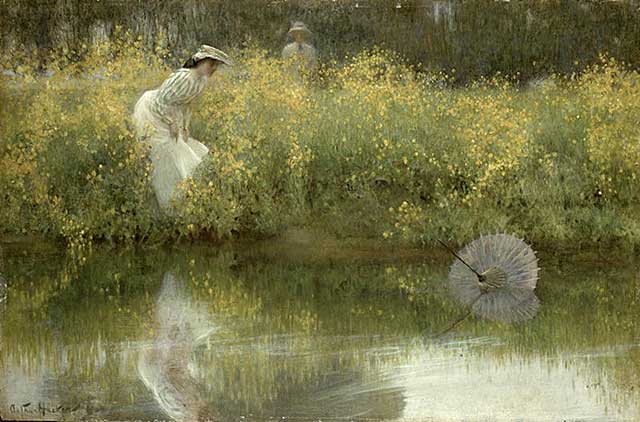| 'Portrait of Mademoiselle Carlier or, The Lady in the Turban' (1910) by Lucien Lévy-Dhurmer; Musée d'Orsay, Paris |
I absolutely love the painting I have chosen for today. The name of French painter, Lucien Lévy-Dhurmer, born on 30 September 1865, rang a distant bell but I did not really know his work. He was a master of pastels and was one of the most important French Symbolist/Art Nouveau artists, having started his career as a ceramist with frequent exhibitions in Paris. In 1895 he started a career in painting and after a visit to Italy, he got acquainted with Renaissance art. In 1896 he exhibited for the first time at the Galerie Georges Petit with about twenty pastels and paintings. In the early 20th century he departed gradually from Symbolism and dedicated himself more to landscape painting as a result of his travels in Europe and North-Africa. Today's painting is a pastel on paper, pastels being Lévy-Dhurmer's favourite medium. It has a dreamlike quality. I love the colours and the hazy depiction of the woman, like she's wrapped in mystery. The female form became one of the painter's favourite themes, influenced by the art of the Pre-Raphaelites. I think this is so beautiful.
;_Tintoretto,_Jacopo.jpg)







